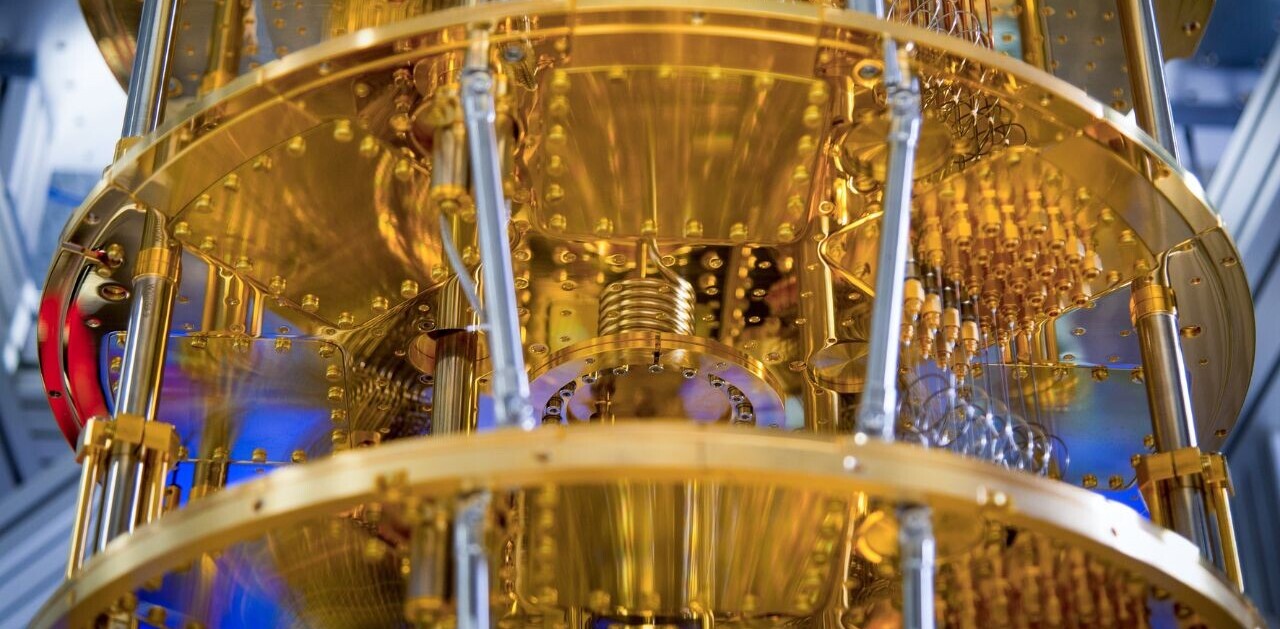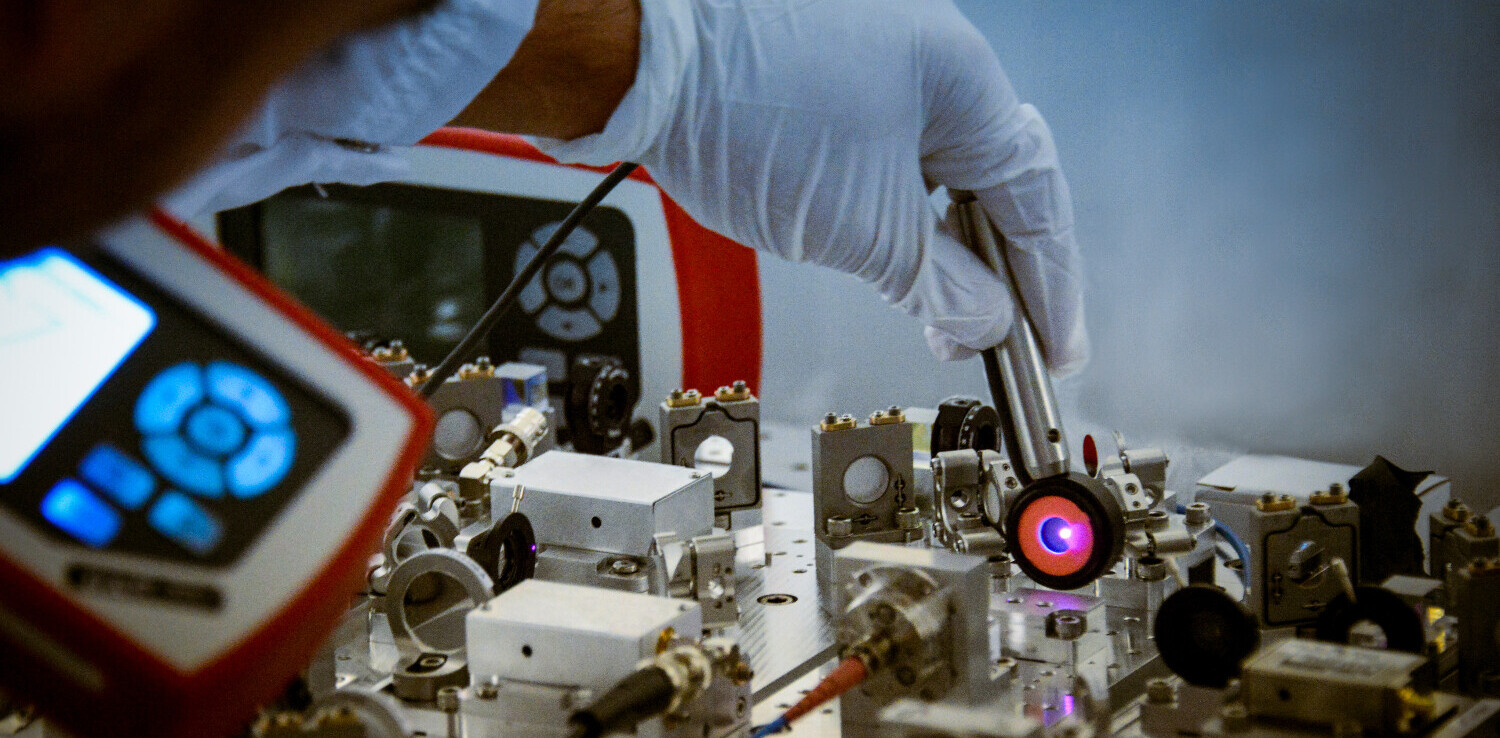
Raise your hand if you live in a stable universe that’s rapidly expanding to support its own vastness. Not so fast Earthlings. We might have an end-game level crunch-time problem on our hands.
Up front: Everyone’s heard of the Big Bang. And long-time Neural readers will certainly be familiar with the Big Rip. But it’s long past time we talked about the Big Crunch.
This hypothetical event would be our universe’s final act. It would essentially be the exact opposite of the Big Bang.
Our universe would collapse in on itself until it became an infinitesimal singularity – a single point containing everything that ever was.
Background: The astrophysics world is all atwitter right now on the heels of the recent discovery of yet another galaxy that apparently contains low or no dark matter.
This is a lot like cutting open an apple and realizing that instead of its delicious, juicy pulp, it contains… well, nothing.
It wouldn’t make much sense because we expect there to be “something” inside the apple to help it keep its physical form. Even air would be something. Finding nothing would be a difficult pill to swallow.
Such a discovery would force us to rethink the physics of apples, much like Sir Isaac Newton did in the summer of 1666.
More background: The Big Crunch is, of course, only theoretical. But the recent discovery of these “dark matter-free” galaxies could lend some credence to the idea.
This is because many scientists believe that dark energy and dark matter make up the majority of the universe.
We believe our universe started expanding the moment the Big Bang happened and hasn’t stopped since. And we believe that this expansion is fueled by dark energy.
Dark matter (theoretically) works diametrically to dark energy. It’s believed to be a force that holds space together.
It’s a bit more complicated than all that, but the important part is that we can only observe these forces indirectly. That’s why they’re called “dark,” we can’t actually see them, but astrophysics simulations don’t tend to work unless we account for them.
How it all ends: Obviously, if the entire universe were once again reduced to a singularity, as scientists believe it was just before the Big Bang, everything in it would be… rearranged. We can’t say it would be “destroyed” because it would all still be there, it would just be infinitely tiny.
It’s a pretty good bet than anything living wouldn’t survive the Big Crunch. And the lack of dark matter in observable galaxies could be a major cause for concern.
This is because, as astrophysicist Paul Sutter wrote in an article published earlier today, whether or not the universe itself is actually “stable” remains an open question.
An unstable or even “mostly stable” universe could be potentially catastrophic for the future of its inhabitants. This may have something to do with the fact that the universe hates entropy.
According to Sutter:
The apparent metastability of the quantum fields of the universe is a little unsettling. Although it could mean that the universe could persist for billions, even trillions, of years without anything going wrong at all, it could also mean that the universe is already beginning to transform.
This sounds like a form of error-correction at a fundamentally universal level. Sutter hypothesizes such a transformation could be entirely mundane, leaving our observations of the universe mostly unchanged. However, they also posit that it could radically alter the underlying physics of the universe to such a degree that chemistry and atomics as we understand them no longer function viably.
Quick take: The lack of dark matter in nearby galaxies is a cause for concern because, currently, we can’t explain why it isn’t there. Like the pulp inside of an apple, we expect to see dark matter inside of a galaxy when we use technology to penetrate its outer skin.
Ultimately, this could be nothing. Science is hard and sometimes the answers to big exciting questions are boring. Maybe the dark matter is there and we just aren’t looking for it the right way.
But the scientists are convinced they’ve got it right, at least as “right” as any other observations on distant galaxies have been. And, if they are right about the missing dark matter, then it’s possible the “instability” of the universe could be a big problem.
If the Big Crunch were to eventually happen, there should be a single moment where the universe’s expansion away from its original singularity converts into a reduction toward an infinitesimal point again.
This process could have already begun.
According to Sutter’s article:
All it would take is one little shake in the wrong direction, in some random patch of the universe, where the Higgs falls apart and the underlying quantum fields find a new, more stable configuration. That region of “new” universe would then propagate outward at nearly the speed of light through the “old” universe.
Sutter isn’t necessarily referring to the idea of the Big Crunch, but the ideas they present lend themselves to the possibility of such an end for our universe.
The Big Crunch, or some other universe-altering event, could be happening right now. And we’d have no way of knowing when its effects would reach our neck of the cosmos. It could be trillions of years from now or before you finish reading this sentence.
Whew! Glad we’re all still here.
The good news is that if the universe can go from Big Bang to Big Crunch once, it seems perfectly plausible to assume it can do it again. So if we all snuff it in an instant, we can take solace in the fact that the stardust we’re made out of could once again burn brightly after the next Big Bang populates the cosmos with stellar entities again.
Maybe our entire universe is just a time crystal expanding and contracting inside a giant quantum computer.
Get the TNW newsletter
Get the most important tech news in your inbox each week.




